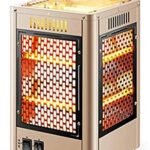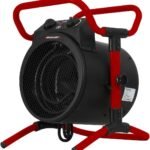Imagine having the power to tweak your water heater’s temperature by degree increments, giving you total control on how warm or cool you want your water to be. Sounds exciting, right? Through this article “Can You Adjust The Water Heater Setpoint Temperature Setting In Degree Increments?” you’ll find out if such adjustment is possible. So, brace yourself as you embark on an enlightening journey of understanding the nitty-gritty of water heater temperature adjustments. Happy reading!
Understanding Water Heater Setpoint Temperature
Definition of setpoint temperature
When talking about a water heater, the setpoint temperature is essentially the temperature to which the water heater is programmed to heat the water. It’s a predetermined temperature level that the heater aims to achieve and maintain. Remember, the device uses the boiler to heat the water and a thermostat to measure the current temperature and compare it to the target or ‘setpoint’ temperature.
Purpose of setting the setpoint temperature
Setting the setpoint temperature plays a crucial role in the functionality of your water heater. By dictating the temperature to which the water will be heated, you ensure that the water is sufficiently hot for your needs, be it for bathing, cooking, or cleaning. This allows you to enjoy the convenience of having hot water instantly available when you need it.
How the setpoint temperature works on a water heater
To understand how the setpoint temperature works on a water heater, imagine the heater as a sophisticated kettle. When the actual temperature drops below the setpoint, the heater turns on and begins to heat the water. Once the water reaches the setpoint temperature, the heater turns off. This cycle repeats whenever the water temperature fluctuates below the setpoint.
Can You Adjust Water Heater Temperature?
General ability to adjust water heater temperature
Yes, you can adjust the water heater temperature, and the process is usually straightforward and simple. Most water heaters come with a dial or digital panel that allows you to set the desired temperature for your hot water. However, the adjustment procedure may vary depending on the make and model of your water heater.
Benefits of adjusting the water heater temperature
Adjusting the water heater temperature allows you to achieve a balance between energy efficiency and comfort. For instance, reducing the thermostat setting could result in substantial energy savings, especially in households where hot water usage is low. On the other hand, increasing the setpoint temperature may be necessary during winter to ensure a comfortable hot water supply.
Precautions when adjusting heater temperature
While adjusting the water heater temperature is typically a safe process, it’s necessary to take some precautions. The water should never be set too hot, as it could lead to scalding. If there are children or elderly people in your home, it’s generally advisable to keep the temperature at a lower level to avoid accidents.
Degree Increments in Water Heater Setpoint Temperature
Defining degree increments
Degree increments refer to the scale at which the water heater’s temperature can be adjusted. For example, if your water heater allows you to change the temperature in 2-degree increments, that means you can set the temperature to 120°F, 122°F, 124°F, and so on.
Importance of degree increments in temperature adjustments
The degree increments in temperature adjustments are important for providing precision in your heating preferences. Small degree increments allow for a finely tuned temperature setting, aiding in the accurate control of energy consumption and the comfort level of the hot water supply.
How to Adjust the Water Heater Setpoint Temperature
Tools required for the adjustment
In most instances, you won’t need any tools to adjust the setpoint temperature of your water heater. The temperature dial is usually easily accessible and can be adjusted by hand. However, some models may require a flathead screwdriver to adjust a recessed dial.
Step-by-step guide to adjusting the temperature
Adjusting the temperature of your water heater begins with locating the thermostat, usually situated behind an insulation panel on the side of the unit. After removing the panel (and insulation if present), you will see a dial or digital display indicating the current setpoint. You can then adjust this to the desired temperature and replace the panel.
Safety measures during the adjustment process
When adjusting the temperature, especially when using a screwdriver or any other tool, ensure the device is powered off to avoid accidents. Avoid setting the water temperature too high as it can increase the risk of scalding. A scald guard or temperature balance device can help ensure a safer temperature.
Typical Water Heater Temperature Available Increments
Common temperature increments in water heaters
Most water heaters offer broad increments, commonly 10 degrees. However, some modern models may offer smaller temperature increments, such as 5 or even 1 degree, allowing for more precise temperature control.
Constraints in temperature increments
While fine increments provide precise control, it’s important to note that not all water heaters offer them. Less advanced heaters may have restrictions due to their mechanical dial controls. This is why your heater may not have the same level of control or flexibility in setting as more contemporary digital models.
Understanding manufacturer’s temperature settings
Manufacturer’s settings are often set at 120°F as a safety measure to reduce the risk of burns. However, they usually provide a range you can choose from based on your preference. Always refer to the manufacturer’s manual for instructions on how to adjust the temperature safely and correctly.
Various Water Heater Models and Their Adjustability
Comparison of different water heater models
Different models offer varying levels of adjustability in their temperature settings. Conventional storage water heaters tend to offer broad increments, whilst more advanced models like tankless or on-demand water heaters often offer finer degree adjustments.
Specific models that allow degree increment adjustments
Modern tankless water heaters, with their digital temperature controls, are best known for allowing minutely tuned temperature settings. Some brands and models to explore in this regard include Rheem, Rinnai, and EcoSmart.
Effect of varying models on temperature control
The model of your water heater can significantly affect how efficiently and to what extent you can control the setpoint temperature. A basic model might only offer increment adjustments of 10 degrees or more. In contrast, some advanced models might offer precise 1-degree adjustments, giving you more control over the hot water temperature and energy usage.
Significance of Degree Increments in Water Heating
How degree increments affect water heating efficiency
Degree increments can affect energy efficiency and the overall operation of a water heater. A smaller increment allows for more precise control, which can lead to better energy efficiency by preventing overheating.
The importance of precise control in water heating
Precise control in water heating is paramount for both comfort and safety. Ability to finely tune the temperature ensures you get hot water at the specific temperature you need and reduces the chances of scalding or causing skin burns, especially in households with children or vulnerable individuals.
Energy consumption in relation to degree increments
Smaller degree increments might also mean more energy savings, particularly in households with varying hot water needs. By adjusting the temperature according to the particular time of day or season, you can minimize wasted energy on heating water hotter than necessary.
Drawbacks of Adjusting in Degree Increments
Troubles in achieving desired temperature with specific increments
One potential downside with certain increments is that it might be difficult to achieve the exact desired temperature. For instance, with an increment of 10 degrees, you might find the water too hot at one setting but too cool at the next lower setting.
Risks associated with small degree adjustments
While smaller increments allow for more precise setting, they can also potentially lead to frequent changes that could cause undue wear on the heater components, leading to a shorter lifespan.
Maintenance challenges associated with regular adjustments
Regular adjustments in small increments could lead to a greater need for maintenance over time. Changing settings often demands more of the thermostat and other components, which could lead to more frequent servicing to ensure optimal functionality.
FAQs About Adjusting Water Heater Setpoint in Degree Increments
Common queries about adjusting water heater setpoint
One common question about adjusting the water heater setpoint in degree increments is whether it can lead to any damage or reduce the system’s lifespan. The answer is that frequent adjustments could potentially lead to wear on the thermostat and other components but typically won’t lead to major damage if done properly.
Answers to possible misunderstandings
Some people may misunderstand that smaller degree increments necessarily mean better performance or significant energy savings. However, this depends on the particular circumstances of individual households. Some homes may not need such precise control, while others could benefit significantly from it.
Expert recommendations for temperature settings
Experts generally recommend setting the water heater thermostat to 120°F, which is often a balance between avoiding scald injury and ensuring comfortable hot water use. However, specific needs may require adjusting this setting slightly upwards or downwards.
Professionals’ Insights on Degree Increment Adjustment
Expert opinions on adjusting water heater temperature in degree increments
Professionals in the heating and plumbing industry generally agree that having a wider range of degree increments can offer users more control over their comfort and energy use. However, they also emphasize the importance of proper use and care when making frequent adjustments to maintain the system’s longevity.
Useful tips and tricks from professionals
For optimal performance, professionals advise not to adjust the temperature setting too often. Instead, find a comfortable setting that suits your needs and stick with it. Regular maintenance of the water heater is also crucial to ensure it operates efficiently and lasts longer.
Professional services for adjusting water heaters
In some cases, it’s advisable to engage professional services if you’re not comfortable adjusting the water heater temperature yourself. They can provide expert advice and service, ensuring the safety and performance of your water heater. Remember, safety first – don’t perform tasks you’re unsure about on such an essential home appliance.









